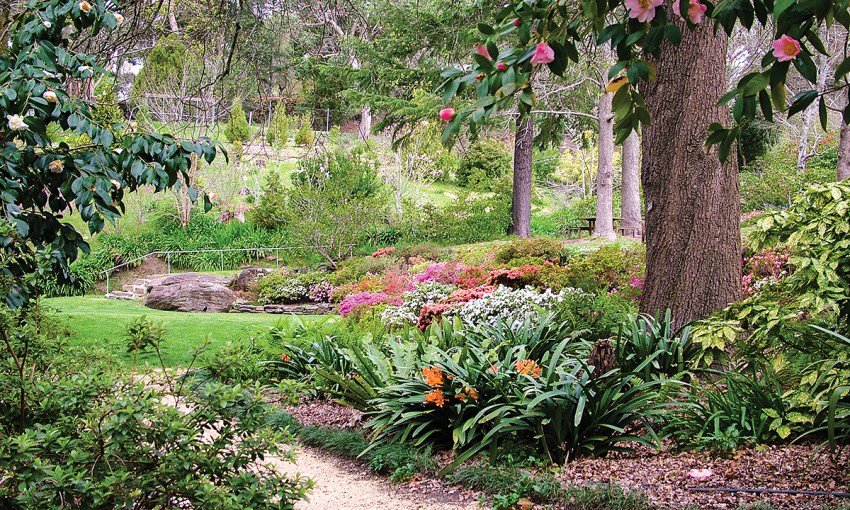The term “hidden treasure” can be somewhat overused, but there really is no other way to describe Stangate House and Garden.
Stunning Stangate
Nestled in the quintessentially Adelaide Hills town of Aldgate and flanked by Euston and Fenchurch Roads, Stangate House and Garden is a remarkable and nostalgic mid-twentieth century heirloom.
Set over 1.6 hectares of terraced and fertile ground, the house was built by Adelaide architect Eric McMichael in 1940, for the Reverend Raymond Cornish and his wife Gwyneth. Named after Stangate in London, the property was gifted by Gwyneth and her mother’s family, the Kyffin Thomas, to the National Trust in the early 1970s, who now own and maintain for us all to enjoy.
Entering off Edgeware Road, a gravelled path leads visitors directly to the cream rendered bungalow. Designed to Reverend Cornish’s specific requirements, the house, while large, is not palatial. It contains two bedrooms each with its own en suite, a maid’s quarters, now converted to a commercial kitchen, and – taking up a large portion of the home’s footprint – an enormous living room.
This substantial main room must have seen its fair share of prayer meetings and social gatherings over the Cornishes’ time. Plus, any visitor would have been very snug thanks to the “state of the art” central heating installed when the house was built. Now housing an expansive display of the National Trust’s heritage dinner settings, this main room still echoes with the sound of voices and cheer from the many weddings and functions that continue to be held on the estate.
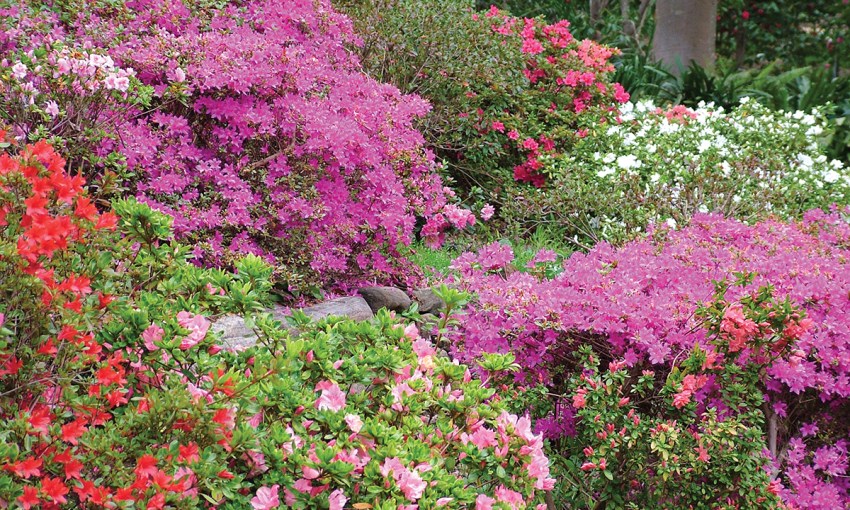
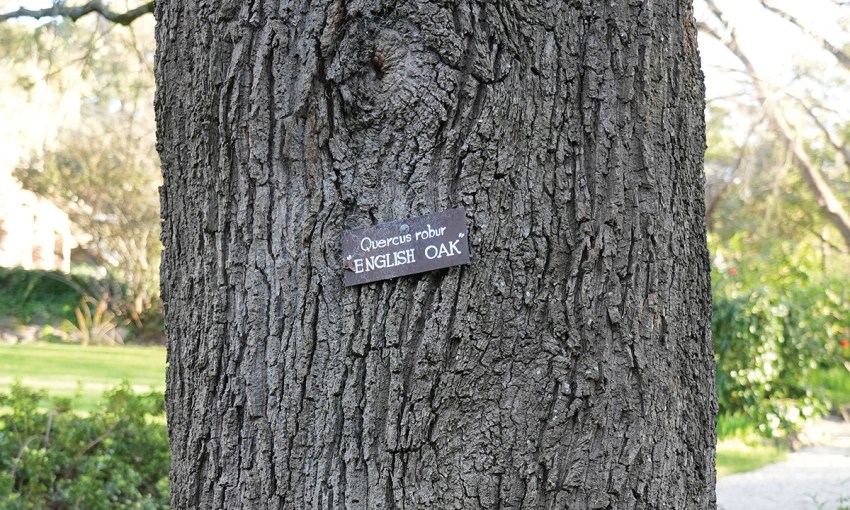
Ideally located on the property, Stangate House overlooks the expansive and beautifully planted gardens. These gardens were influenced by Reverend Cornish’s sister, the celebrated interwar local landscape designer, Elsie Cornish, and they showcase the natural, informal post Edwardian style for which she was so well regarded.
Terraces were cut into the undulating land, allowing for newly flattened areas to be planted and meandering paths marked out. Walking the many paths across this property today, you quickly discover there are no straight lines. The twisting and turning walkways were designed to add interest and intrigue as to what might be beyond the next bend, enticing any visitor through the property.
Camellias, in all their forms, are the dominant plant throughout these gardens, thanks to a symbiotic partnership between the National Trust and the Camellia Society of the Adelaide Hills. Since 1977, the CSAH have been responsible for the maintenance and plantings of a sizeable portion of the grounds. Commencing with thousands of volunteer hours removing invasive blackberries and taking out diseased and dying trees and shrubs, the society has, over nearly 45 years, enhanced the look and feel of these gardens.
You will find camellias from all the different groups, sasanquas, japonicas, reticulatas, miniatures, espaliered, hedging, topiary, potted camellias, Higos, hybrids and historic camellias. Little wonder the International Camellia Society recognised Stangate House and Gardens, in 2012, as an International Camellia Garden of Excellence, one of only five in Australia.
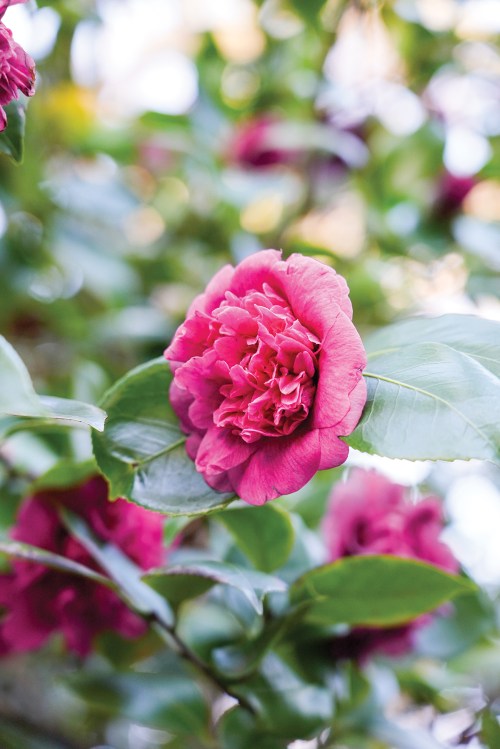
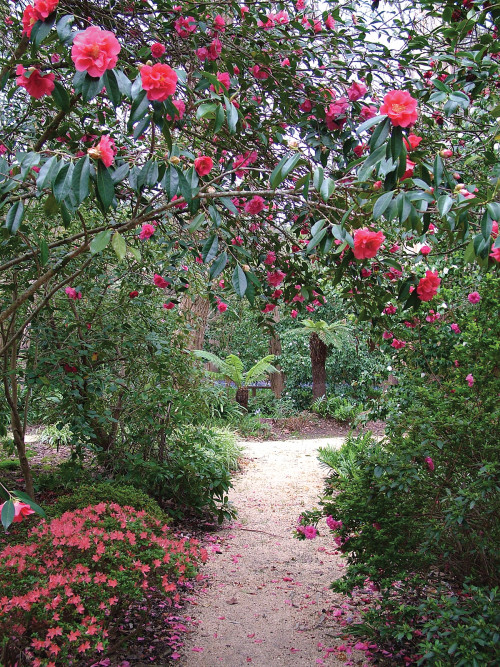
Everywhere you look or walk, camellias line pathways and stairs, form hedges, and are planted in groves and in pots. The copious dappled light, provided by the extensive tree canopy across the property, creates the ideal place for camellias to thrive. There are currently more than 750 camellias throughout, the majority of which are named, as identified on the metal tags at the plant’s base.
The captivating camellia flowering season commences in autumn with the tough and terrific sasanquas, whose blooms in shades of whites, pinks or reds, herald more dazzling beauties to come. Reticulata, though not common in home gardens, are a show-off here. More an open tree than a shrub, within Stangate Gardens they are allowed to grow and stretch, some upwards of six metres. Reticulata hybrid cultivars produce spectacularly large, crinkled blooms and notable three-segmented capsuled fruit.
As to be expected, japonica varieties – Australia’s most popular camellia – dominate the plantings around these gardens. Later to flower, their flamboyant and shapely blooms light up the pathways and woodland beds, providing colour and excitement in stunning hues until late spring, even into early summer at times.
One camellia curiosity to be found near the Euston Road high side of the garden are the Higo varieties. Known as samurai camellias, they originated in the former province of Higo, now the Kumamoto Prefecture of Japan’s southernmost island, Kyushu. Dating back centuries, during Japan’s Edo Period, only samurai and priests were allowed to grow camellias. As a result of breeding by the samauri, the Higo camellias, featuring a prominent cluster of large, perfectly symmetrical stamens, were developed.
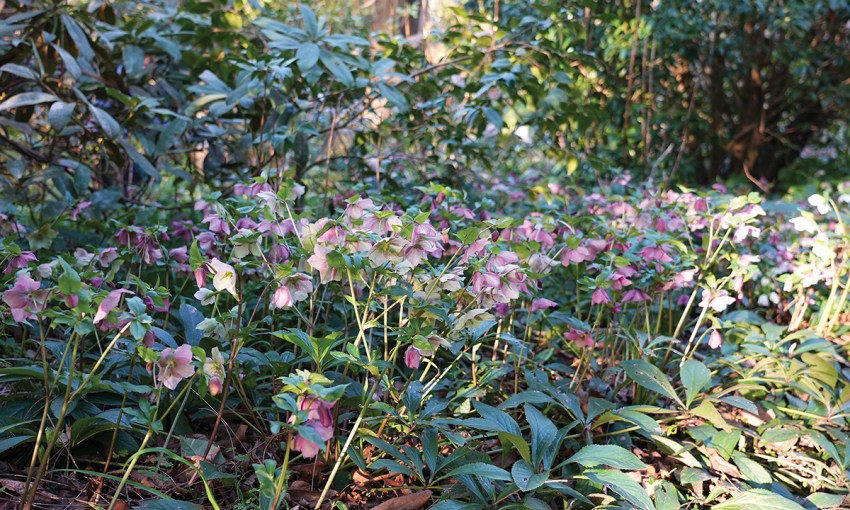
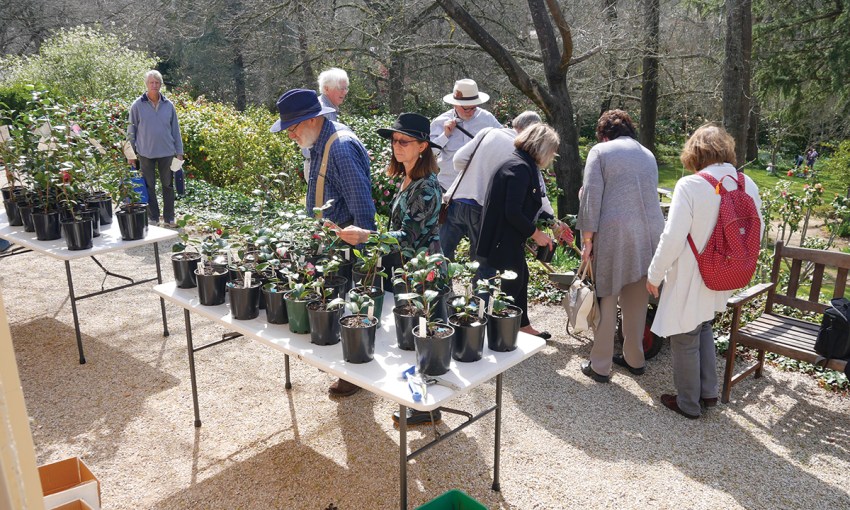
Importantly, some existing remnant vegetation, including the imposing grey box and candlebark eucalypt trees, were retained when work was originally undertaken in the 1940s and are still growing as strong as ever today. While there are some native Australian plants, Stangate Gardens is very much a slice of the English countryside. Deciduous trees dominate the landscape, oaks, Japanese maples, European beech, silver birch create an upper canopy that is blanketed with foliage from late spring onwards, transformed into a riot of yellow, orange and red come autumn and a thicket of interwoven, bare branches in winter.
Add the stately cedars and masses of under-planted bulbs including daffodils, jonquils, bluebells, grape hyacinths, cyclamen, lachenalias, irises, hellebores, plus hydrangeas, roses, rhododendrons and azaleas, and you have a garden for all seasons.
One tree that’s hard to miss is the magnificent English Oak, which towers and reaches over the wide lower terraced lawn. Every big tree has a big story and this one is no different. Now one of Australia’s largest specimens, it is purported to have been planted by a homesick miner on his way to the gold mines at Echunga back in the mid 1800s from a Sherwood Forest acorn. Others believe it to be the green-fingered work of Sarah Rumble, wife of the local Aldgate Pump Hotel publican at the time. No matter what the true story is, countless visitors have enjoyed this tree’s cooling and welcoming canopy for more than a century and a half of hot summers.
Turf also plays and important role here. From the lower house terrace, lawn runs down to a sandstone dry-stone wall, which acts as a ha-ha, creating the illusion of an uninterrupted connection to the rolling turf below. The many large, lawned areas across the property provide welcome open space to stroll, have a picnic or lay down and listen to the birdsong chorus.
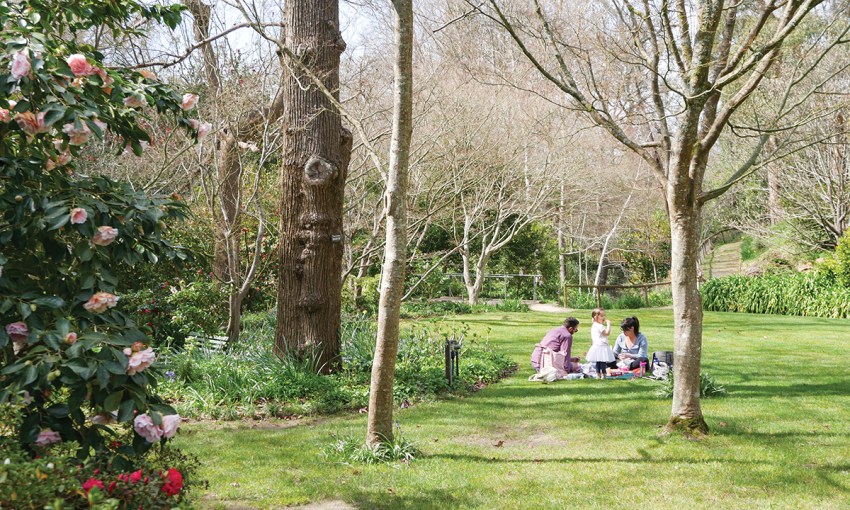
Thanks to the vision of the Cornishes and custodianship and hard work by the National Trust and Camellia Society of the Adelaide Hills, Stangate House and Gardens is one of the most tranquil and plant-filled places to visit in South Australia, no matter what season.
The National Trust opens the house and gardens every fourth Sunday of the month between 10am and 2pm, and holds other events throughout the year (nationaltrust.org.au/sa).
The Camellia Society of the Adelaide Hills also holds its ever-popular autumn and spring open days where, apart from taking in the magnificent grounds, you can purchase camellias and a cake or two from their trading table (check their Facebook page for details).
Additionally, the society is always looking for a pair of hands to help out in the garden; what a great place to volunteer your time.
This article first appeared in the September 2021 issue of SALIFE magazine.



